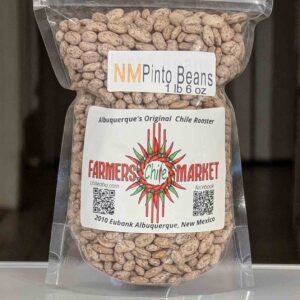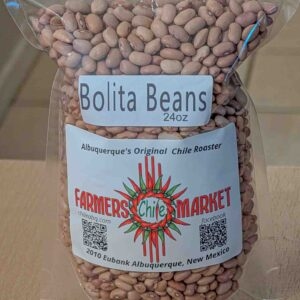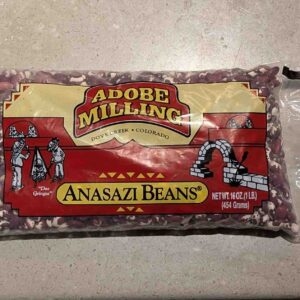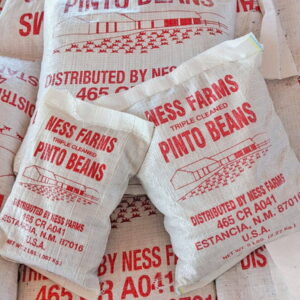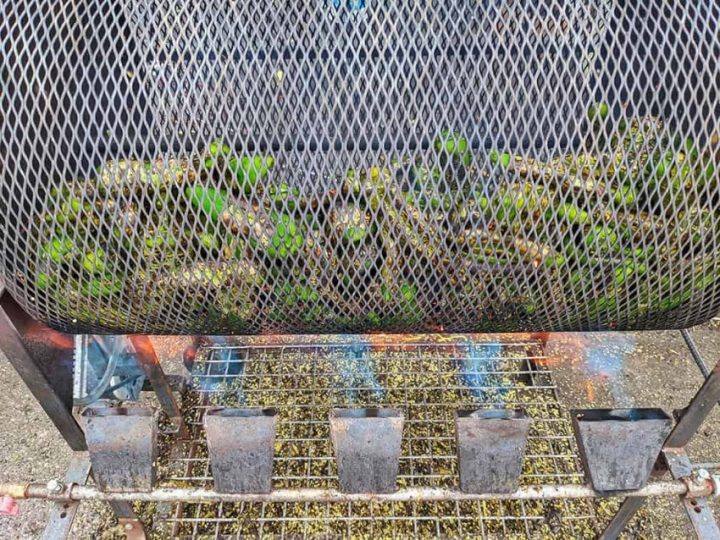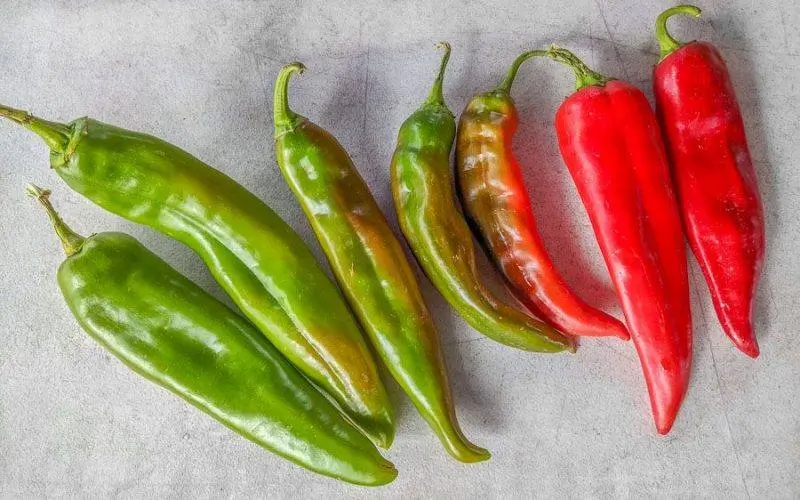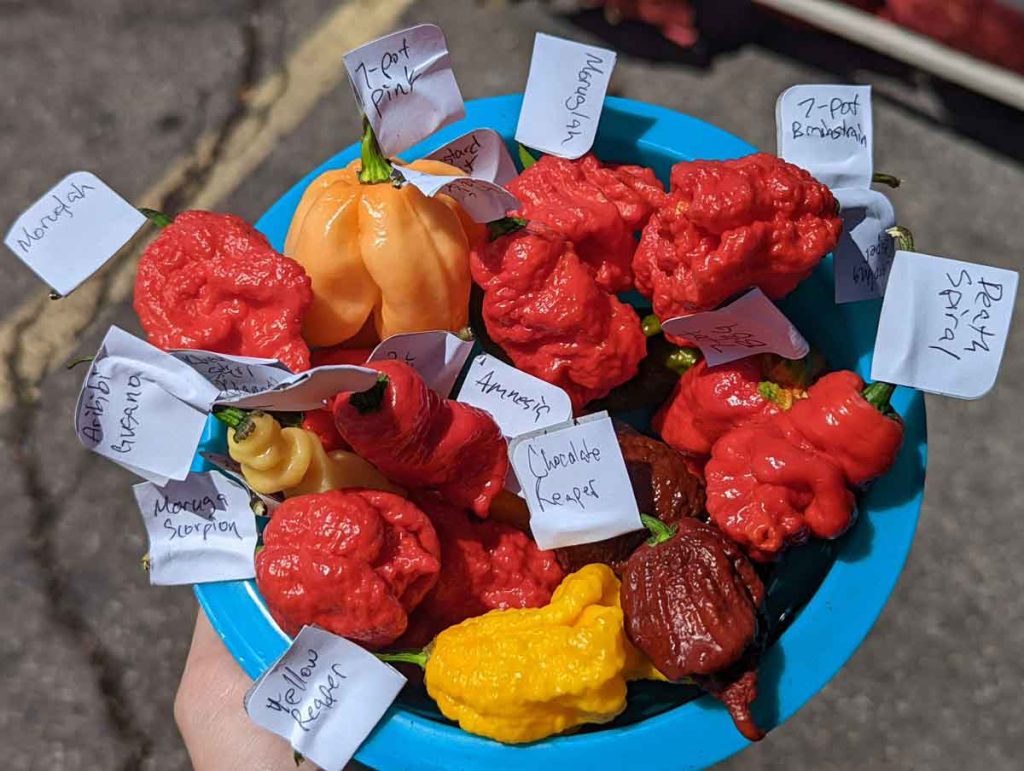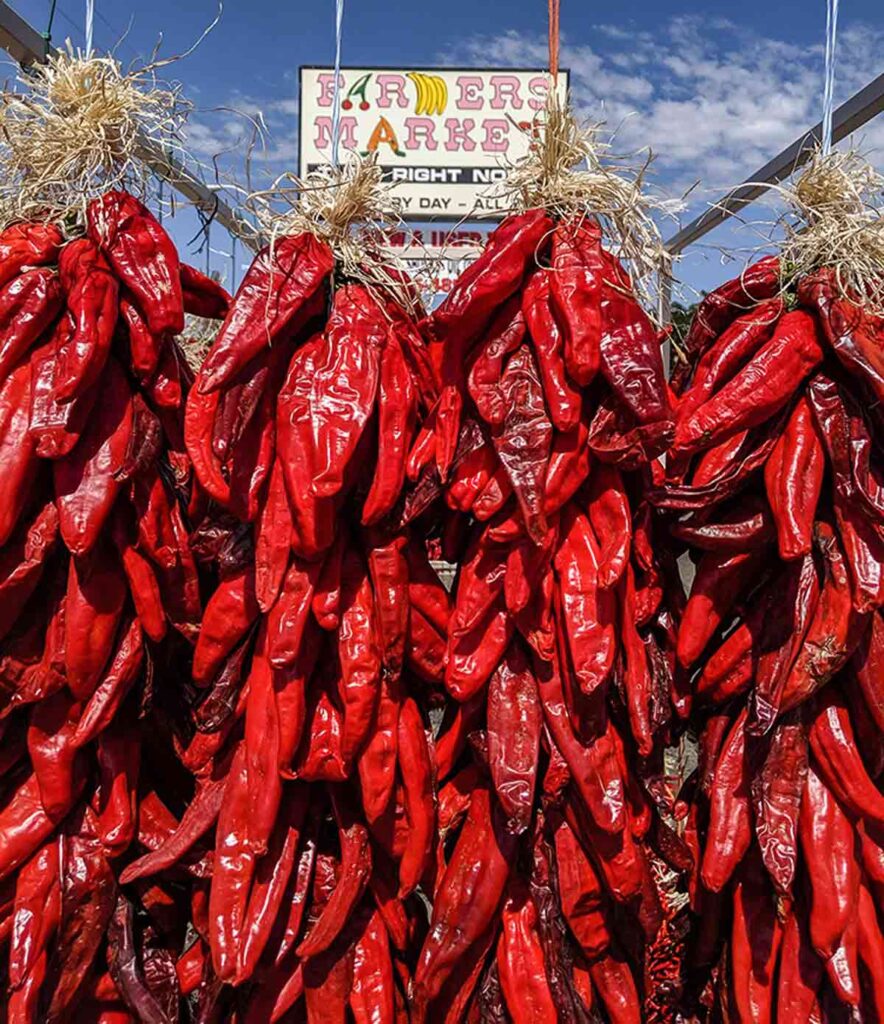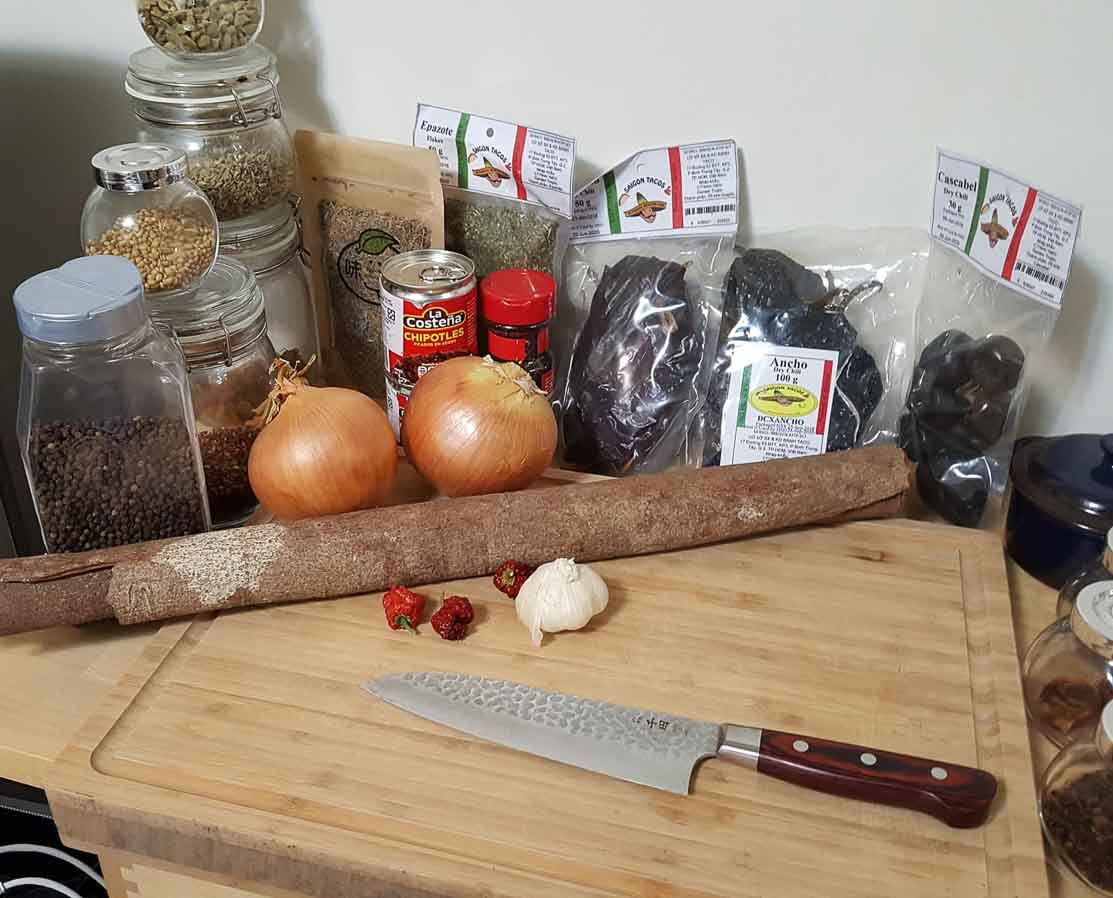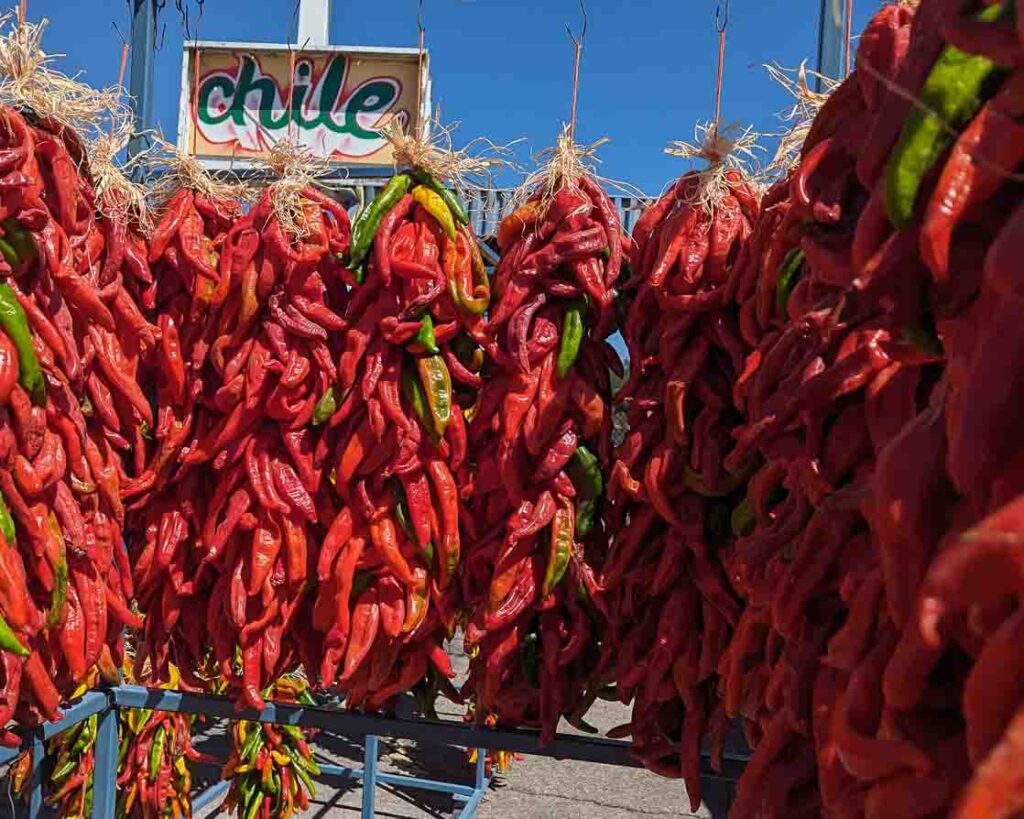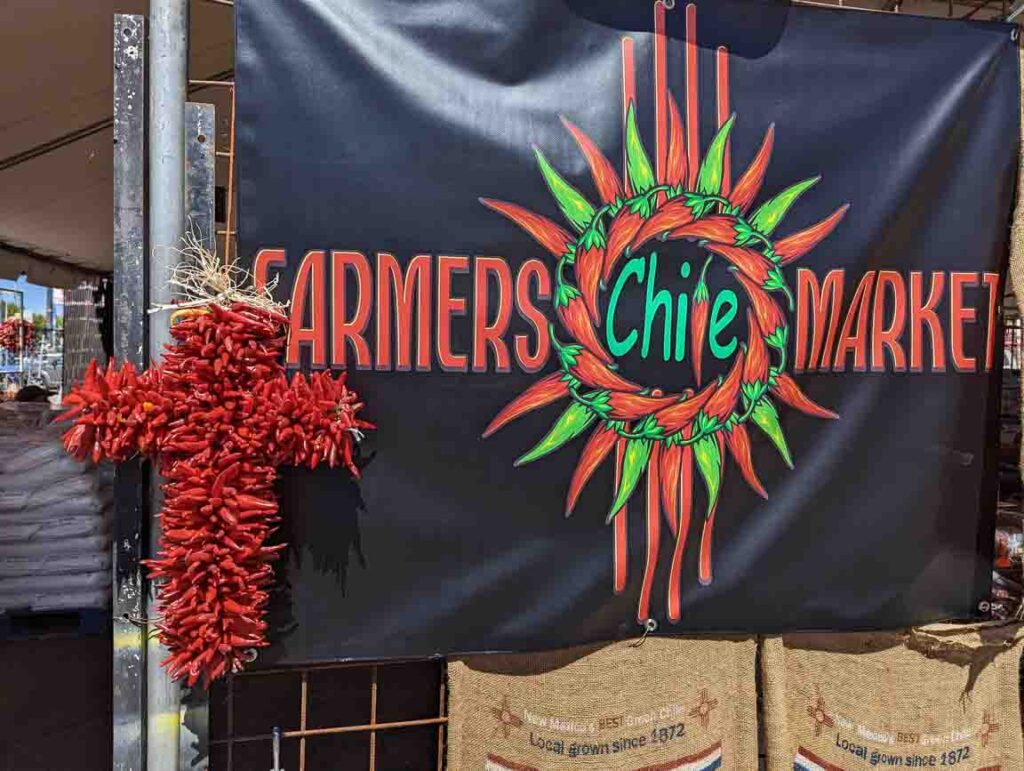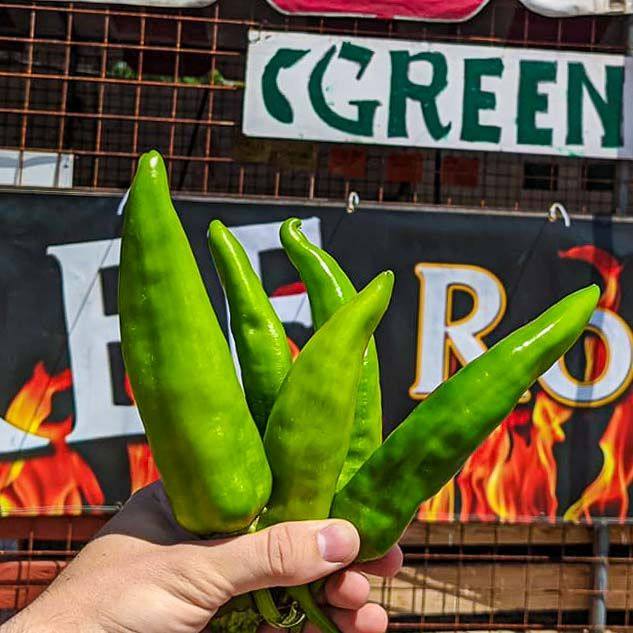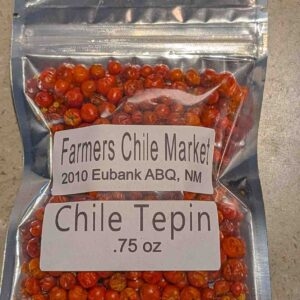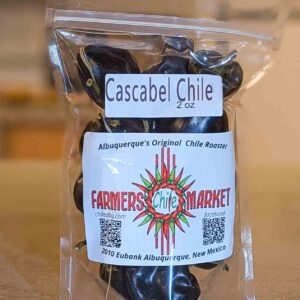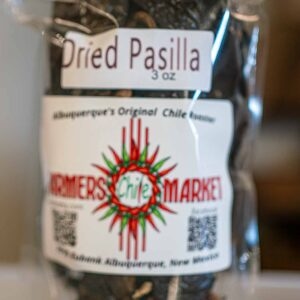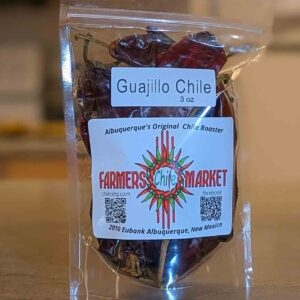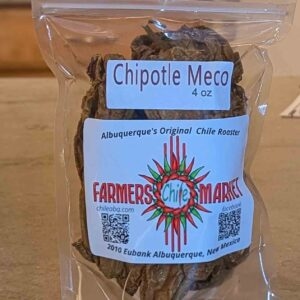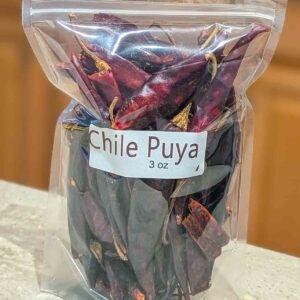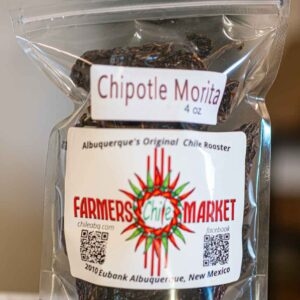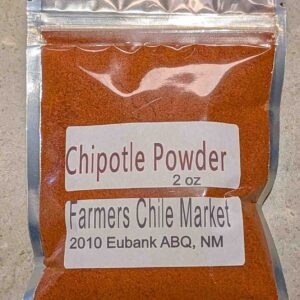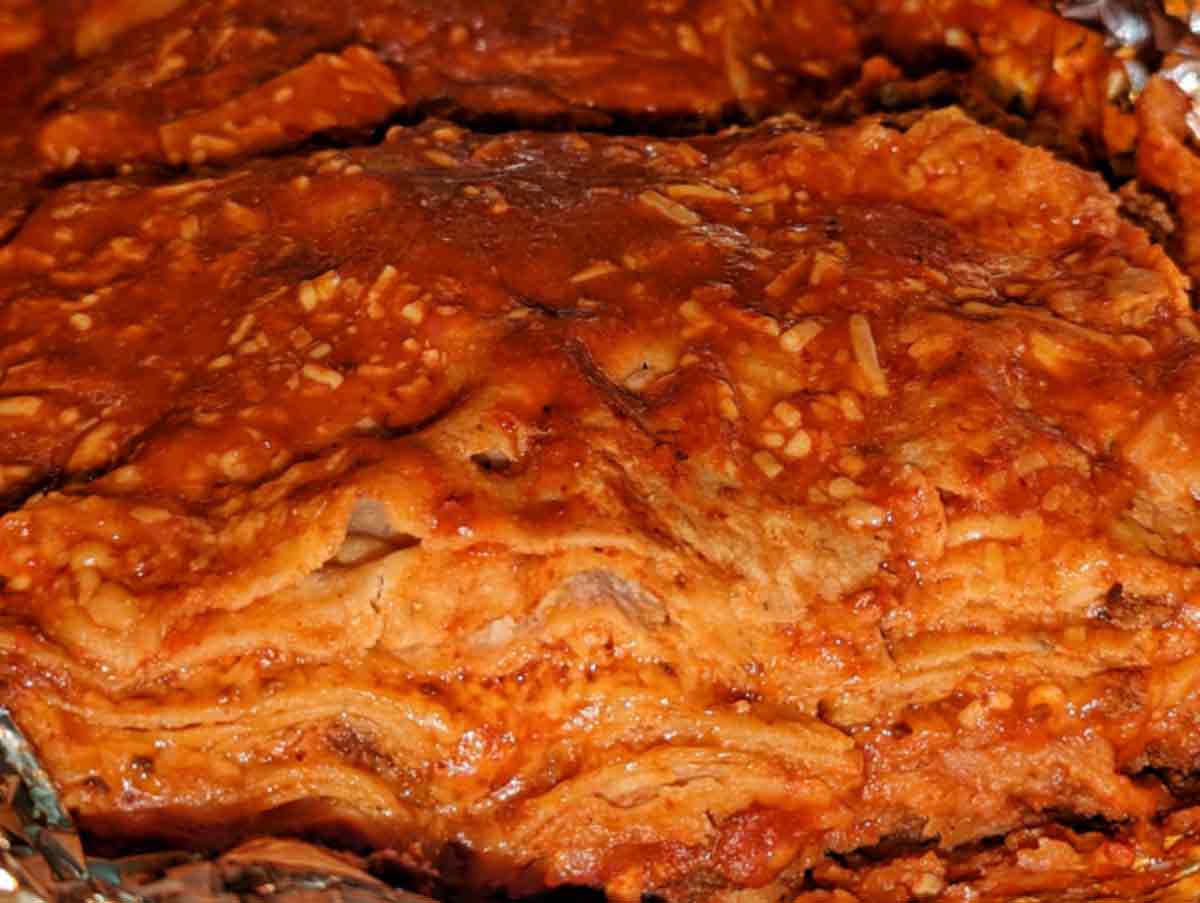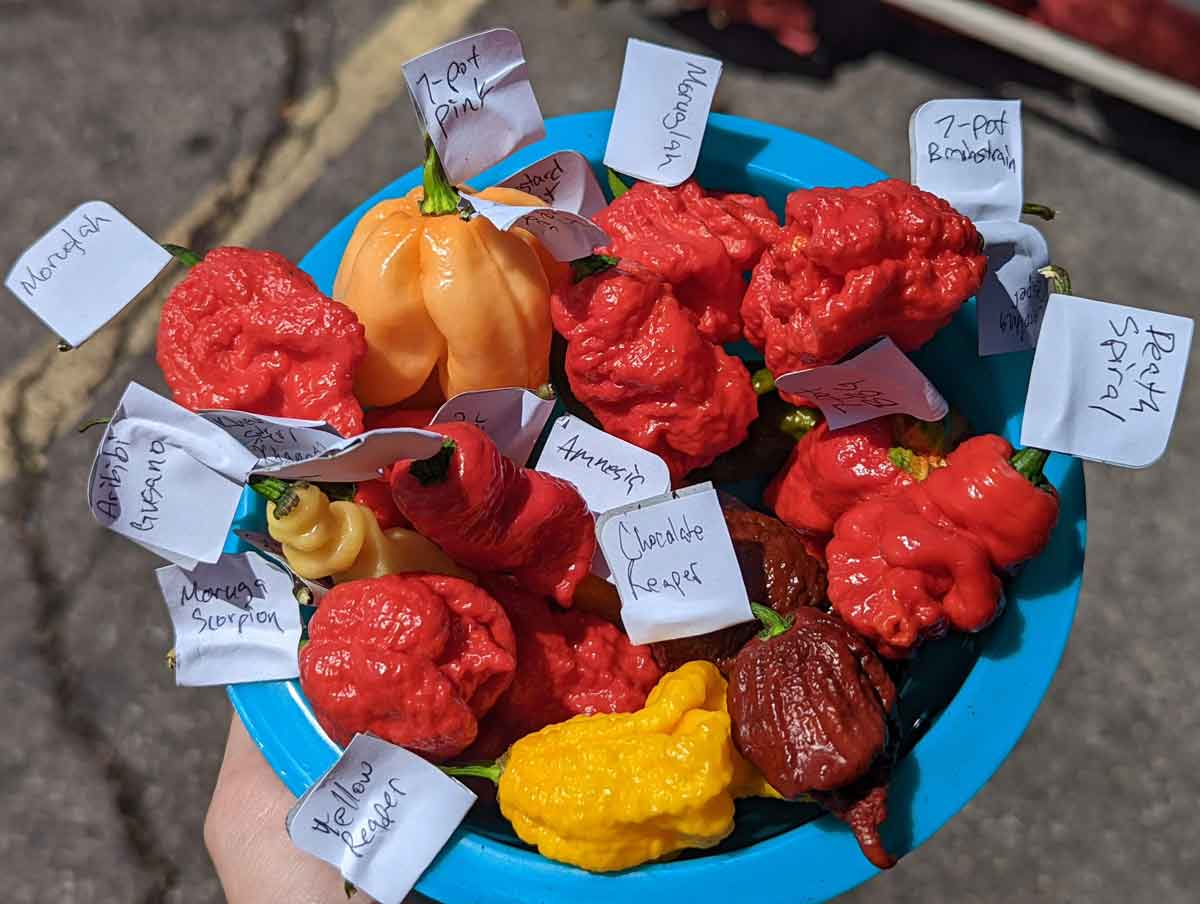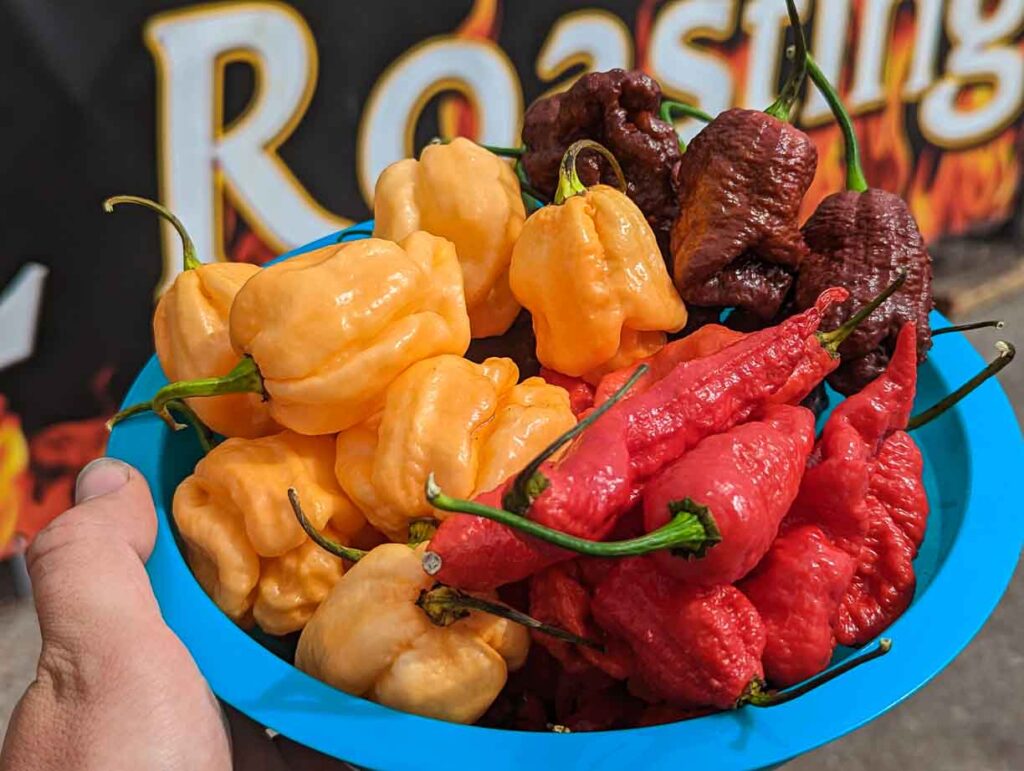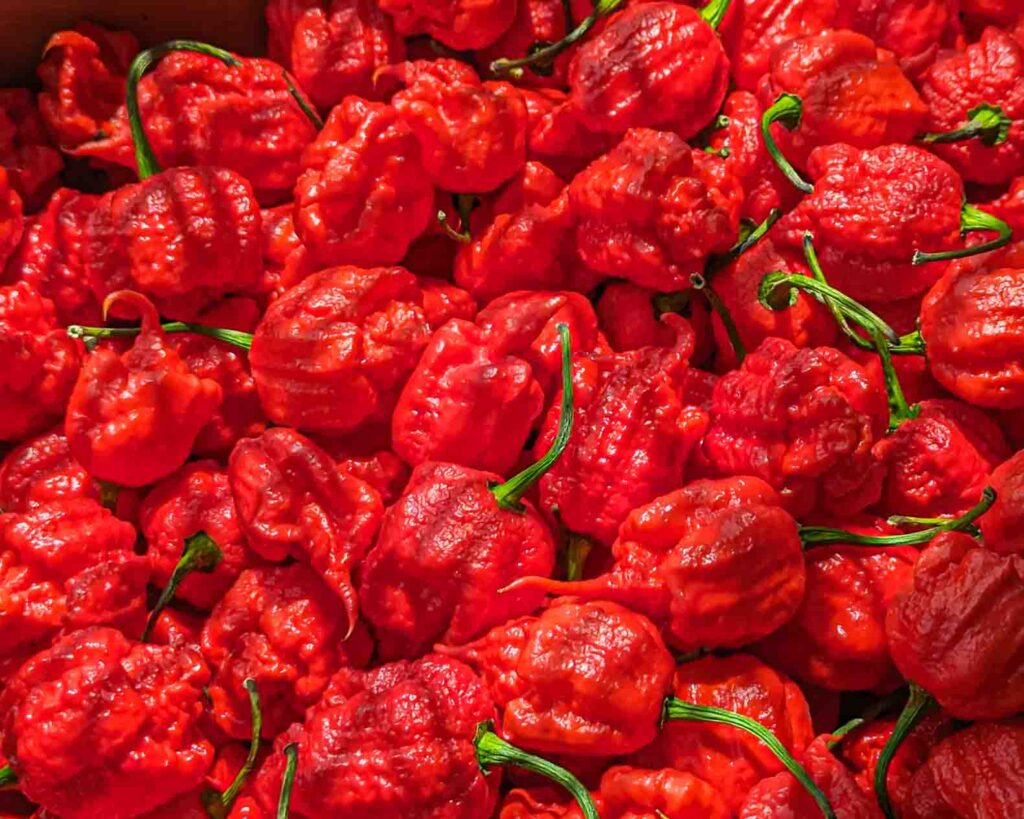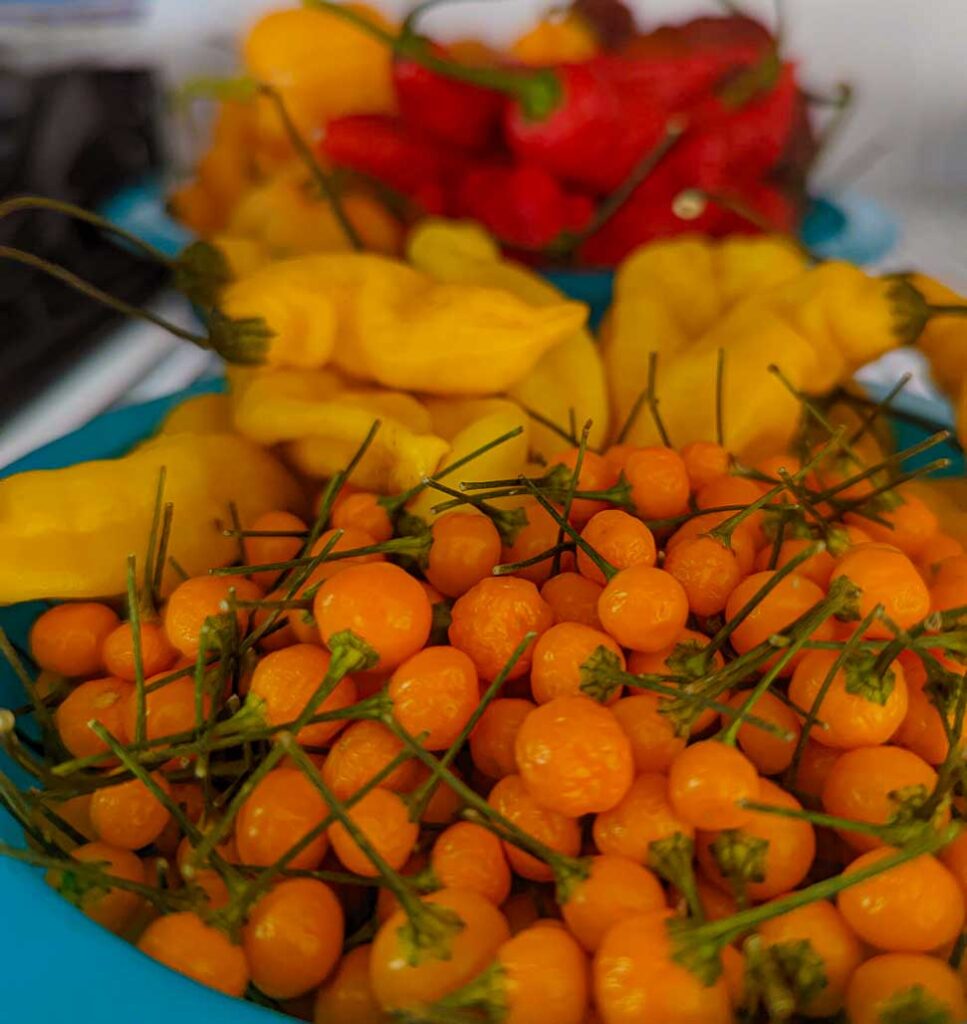Your cart is currently empty!
Month: April 2023
-
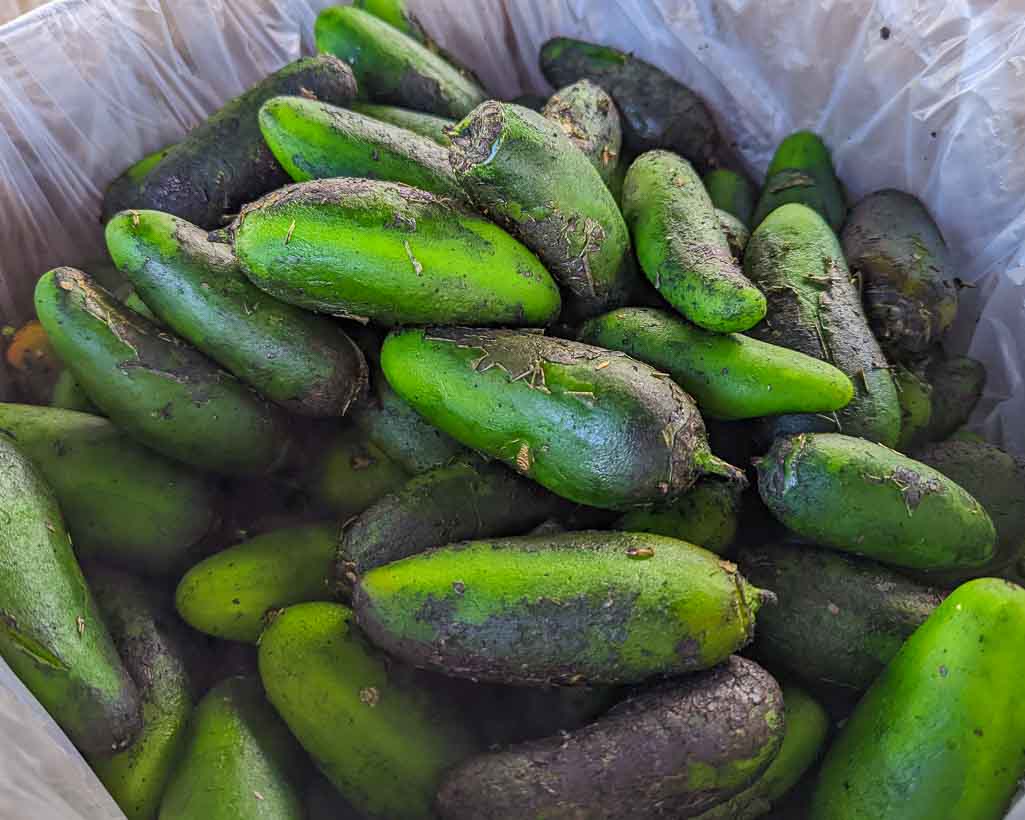
Ouch, My hands are burning! – All About Jalapeno Hands
What are Jalapeño hands?
This is a long and detailed article. If your hands are on fire NOW and need a fast answer, click here to skip down to how to soothe Jalapeño Hands!
If you have worked with spicy foods enough, you probably have had at least one time when your hands burned afterwards for hours. This long lasting burning feeling is commonly called jalapeño hands in English, and has caused a lot of pain to many home cooks, and even professional chefs after working with hot peppers. This is a common occurrance in New Mexico, particularly during the Hatch chile season, when New Mexicans take time to peel full 40 lb sacks of fresh roasted New Mexico chile. When working with Hot, extra hot, or the XXX-hot Lumbre chile, it is quite easy to get the burning sensation known as Jalapeno hands, or in this case a better name might be Hatch chile hands!
What causes the feeling of spice?
The feeling of spice is caused by capsaicinoids binding to TRPV1 receptors, also known as capsaicin receptors as they are the only receptor activated by Capsaicin according to Rosenbaum & Simon, 2007 . As these receptors are located throughout the nervous system, there are many more ways to experience spice than just eating food. Capsaicinoids produce a variety of effects, including sweating, vasodilation, and localized pain. There are different varieties of capsaicinoids in chili peppers that appear to have slightly different effects. The most famous one is Capsaicin, but there are other common types, such as Nordihydrocapsaicin and Dihydrocapsaicin which are almost as common in many chili pepper varieties. I won’t go too into the scientific details, but there is a great article up on the National Library of Medicine done by a team of researchers at Szent István University for those who like a hearty dose of chile science with their morning coffee like me!
How to prevent jalapeno hands?
Properties of Capsaicin
To understand this, it is important to know more about what causes the burning sensation in your hands. Capsaicinoids are oil like compounds that are hydrophobic by nature. This means they don’t mix with water. They bind to fats and alcohol, and will be picked up by emulsifiers like hand soap too. If you cut peppers and just rinse your hands with water, odds are it won’t have much preventative effect.
Wear Disposable gloves
If you have food preparation gloves available, wearing them when you work with spicy food is a great idea. In case you get your roasted Hatch chile at Farmers Chile Market, feel free to ask for a pair of gloves. We are happy to share, and would hate for your hands to burn after getting a sack of roasted chile from us! Even if you don’t have disposable gloves on hand, there are some things you can do to prevent a large heat buildup.
Wash Your Hands Frequently
Perhaps the best way besides a physical barrier between your skin and capsaicin is to frequently wash your hands with soap and warm water. The soap will bring the capsaicin oils up and allow them to be washed off by the warm water, which also increases the viscosity of the oily compounds to help wash them off your skin. If you do this immediately after cutting peppers, you might not have any problem. Just don’t forget the soap, as it is the most important part. Any regular hand soap will do, and dish soap also works just fine if it’s what you have on hand. If you are doing a simple dish with only a few peppers, washing your hands thoroughly at the end will be good enough. In case you are doing something which takes longer like peeling a sack of roasted Hatch green chile, wash your hands a few times during peeling as a preventative measure.
Avoid touching chili, especially the juicy parts
Another thing you can do is try not to touch the juicy parts of whatever you cut. If you are working with fresh, unblemished peppers, you can probably do a lot without getting juice on your hands. In general, the outside of an undamaged chile pepper doesn’t really have spice, but the inside, especially the membrane area where seeds are has a lot. When you cut a pepper, the spicy juices leak out and get on your hands. With more mild chile, it is ok to do more work with them. The spicier a chile is, the more you should consider other ways of processing them without using your hands too much. Scissors or a food processor is ideal for superhot stuff, but wash them thoroughly with soap after.
Prevention is the Best Solution
In case you are reading this while your hands are burning, damper your expectations. You can do things to lower the heat a little bit and reduce the length of the burning sensation. That being said, there are no really quick fixes.
How to soothe jalapeno hands after they start burning?
There are 3 main ways to do this, which I will outline first. Click to jump down to my personal method, which combines several of these!
Using oil
Time to get messy. Get some olive oil or some other kind of cooking oil, and rub it all over your hands for a minute or two. This will pull some amount of heat out of your skin and into the oil. After this, wash your hands thoroughly with soap and hot water. You will probably not feel any relief immediately, but this step is very helpful in shortening the time that your hands burn. Unfortunately, capsaicin that has penetrated the many layers of skin will not come out. You will still feel some burning for a while, but it will be significantly reduced by doing this.
Using Alcohol
If you pour a glass of cheap liquor and soak your hands in it, it will help to pull out spice. Similarly to using oil, you should wash your hands with soap and warm water after this to take off any spice that remains on the surface of your skin. Although rubbing alcohol is commonly suggested, it tends to evaporate very quickly. Capsaicin has a boiling point of 210 °C, so evaporation won’t help relieve the burn much. It needs to be sucked out by alcohol that won’t evaporate. Keep in mind that alcohol can also cause even more skin irritation, so don’t soak them for too long.
Using milk
Many people will recommend soaking your hands in cold milk, and this also will have some effect, but try using oil and washing with soap and water first. Milk helps pull out heat due to the casein proteins in milk which emulsify the fats naturally present in whole milk. The approximately 4% fat present in milk is another thing that capsaicin can dissolve into. Some people recommend buttermilk, but buttermilk is typically acidic, falling in the 4.4 to 4.8 pH range. “Casein proteins are heat-stable, but will denature below pH 4.6.,” according to The Rockefeller University. This is bad news for the effectiveness of milk, as one of the key aspects of its effectiveness in dissolving capsaicin is greatly reduced in most buttermilks.
Use your mouth
If you have hot spots on your hands somewhere, you can suck some of the heat off with your mouth, but this method takes a while and might gross out people around you. You will actually feel the heat in your mouth using this method, even after you use the other methods. The reason why, is that the previous methods are chemical methods without significant kinetic properties. They can’t really penetrate much further than the surface of your skin in a short amount of time. Suction is a more kinetic force which helps pull some of the capsaicin from deeper down. I’m not ashamed to admit that I’ve done this more than once.
My personal way to cut the burn
I use the oil and handwashing method first. I drip a bit of oil on my hands over the sink, so I can be gratuitous and not worry about making a mess. From there, I rub my hands together to mix up the oil and maximize contact with my skin and also increase the temperature to improve solubility of the capsaicin. I do this for about 3 to 5 minutes. After that, I wash my hands multiple times with plenty of soap, making sure to wash under my nails and in the cuticles as well. After that, I suck my fingers on the hot spots, which is the fastest way I know of to relieve lingering pain. My first time feeling the burn of jalapeño hands, it burned for at least four hours. Now, using this method it never lasts more that an hour or so.
Myths about Soothing Jalapeno Hands
Many websites talking about Jalapeño hands mention using lemon juice to neutralize capsaicin, because capsaicin is an alkaloid and lemon juice is acidic. The fact that so many hot sauces are vinegar based should quickly disprove this belief. Chili peppers are acidic to begin with too, which should further cast doubt on this spurious claim. There is actually research that shows acids can increase the effects of capsaicin, stating that “lowering pH resulted in a substantial increase in the magnitude of the current at the same capsaicin concentration,” Ryu et al., 2003. Because of this, I don’t recommend using lemon juice to sooth skin irritation caused by handling Jalapeño peppers or other spicy foods.
Don’t touch your eyes, and especially don’t touch your lover
Unless you want to cry harder than when you watched Titanic, keep your hands away from your face. Likewise, if you don’t want to sleep on the couch for the next month, keep them away from people you care about too. Many times, we underestimate just how much spice is on our hands, because it takes such a long time to penetrate the layers of skin and bind to a receptor that you can feel it.
Jalapeño hands and Hatch chile
People in New Mexico are quite prone to jalapeno hands, as a yearly tradition for many of us is peeling our sack of chile for the year. Because of this, I wrote this blog post to hopefully spare some people from a fiery feeling in their fingers this 2024 Hatch chile season! Remember the key points. If you have gloves, use them. If you don’t have gloves, wash your hands with soap a lot. Follow these key ideas so you don’t get jalapeno hands, even if you are peeling a sack of xxx-hot Lumbre chile. Happy peeling, enjoy your chile!
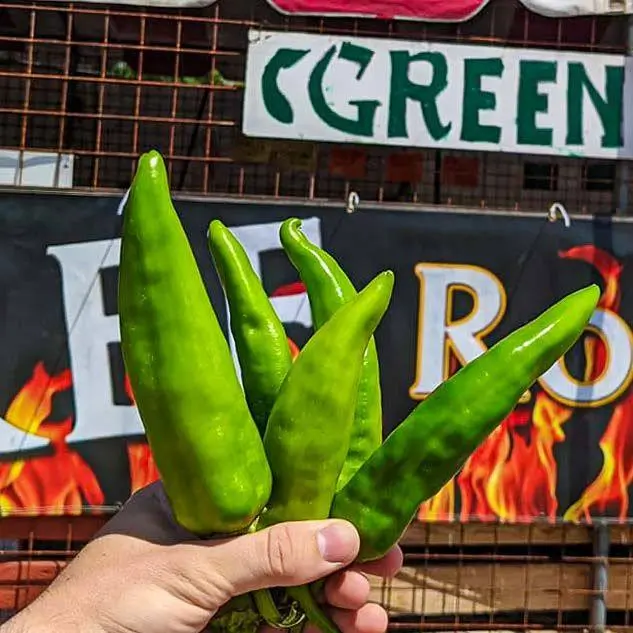
This Lumbre chile is hot! Be careful with it -
The World of Beans
In almost everywhere in the world, beans will be consumed in some fashion very regularly. Around East Asia, you often see sweet bean jams, and tofu is essentially soymilk, coagulated like milk is into cheese. In Italy, minestrone soup is famous for having many types of beans and grains. In the Middle East, hummus is quite popular. There are fermented bean sauces, bean cakes, bean chips, and so much more available in the world.
Why are beans so popular around the world?
Simply put, beans are the best staple food in the world. They contain plenty of starches, amino acids, vitamins, and minerals, and they store dry for years. Vegetarians and vegans who understand nutrition turn to beans for many different meals. If you ask your vegetarian friends, they probably have chickpeas, pinto beans, dal, kidney beans, lima beans, and maybe more in their pantry. In the past, we humans were a lot more vegetarian than today, because meat was a scarcity reserved for the rich. Beans have been cultivated for thousands of years, and was no doubt the thing that kept many families alive during times of hardship, as well as being a primary source of protein for many. Even before we knew anything about nutrition, we probably noticed that people who eat beans were healthy.
The flavors of beans
If you are a bean connoisseur, you probably have had beans in many different ways. From a bean dip for chips, to chili and beans, hummus, and even sweet bean desserts, there is a wonderful world of flavor with each bean. The chemical makeup of different beans is different with every bean, with different starches, pectins, amino acids, fibers, and many vitamins and minerals too. All of these different components mean that every bean has a unique flavor, texture, and aroma. Some beans are smooth and creamy, where others like chickpeas are more hearty, which is why hummus has its unique texture. Certain types beans have earthy aromas, which go amazingly in soups and strong flavored side dishes. Just like sweet potatoes tend to have a nice desert like aroma more than russet or other varieties of potatoes, sweet beans are the same way. There are an amazing variety of flavors among beans.
Popular bean dishes around the world
This list is non-exhaustive, and I will probably add more in the future. Please email me if you have any suggestions.
Beans in India
In India, many curries will include chickpeas, whole or mashed. Dal, which is split beans, typically lentils, but occasionally other beans is a great source of protein, vitamins, and minerals. India is a hub for many religions with strict food rules, so naturally they will consume a lot of beans, which are excellent plant based protein.
Beans in the Middle East
Probably the most famous, but there are many bean based dishes, such as mujaddara, a lentil and rice dish, as well as ful mudammas, a filling fava bean based dish. As the Middle East is largely desert with many civilizations built on floodplains. In some years, the rivers would flood, and people would have to take their things and move to higher ground. Additionally rivers in that area often change shape through the years, so many people had to migrate. It makes sense beans would be popular, as dried beans are a great way to grow and store nutritious food for years.
Beans in Europe
In Europe, beans are very popular in soups. Minestrone is perhaps the most famous representation of this. Additionally, beans are a very common side dish. Generally Europeans don’t eat too many beans as a main course as many Asian and African countries do.
Beans in the Americas
Depending on where in the US you are, many different bean related dishes will be available. Many parts of the US have beans in a way similar to Europe, in soups and with side dishes. The US is very international though, and many different famous foods from other countries has found its way here.
Beans in Cincinnati
Beans in New Mexico
In New Mexico, pinto beans are the most popular bean, but different beans such as bolita beans or Anasazi beans are also readily consumed. Over here, beans also aren’t generally the main course, but they play a part in many main courses and side dishes. Refried beans are one way to serve them, because it is a very easy dish to plop a spoonful onto a plate, and maybe add a pinch of cheese. Personally, I am quite fond of borracho beans with green chile.
I might write a recipe on it in the future, but recipes take a long time to plan, photograph, and write.
Beans at Farmers Chile Market in Albuquerque
This 2025 season, we carry pinto beans from Ness Farms, as well as bolita beans, and Anasazi beans. We will possibly have more than just that in the future, but we recognize the importance of beans in our New Mexican cuisine, and want to offer a wider variety for people to make with our delicious red and green chile. Roasted or raw, mild or extra hot, you know we have chile, well we will have a large variety of beans for you to make a truly New Mexican dinner. Please remember us when you are thinking about where to get bolita beans and Anasazi beans in Albuquerque.
-
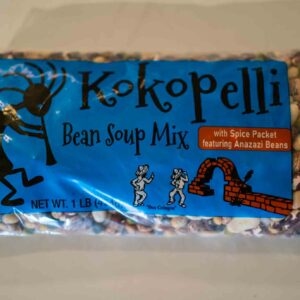 Kokopellli Bean Soup Mix – 1 lb$6.99
Kokopellli Bean Soup Mix – 1 lb$6.99 -
 1lb 6 oz Estancia, NM Pinto Beans$6.99
1lb 6 oz Estancia, NM Pinto Beans$6.99 -
 Bolita Beans$9.99
Bolita Beans$9.99 -
 Anasazi Beans$7.00 – $27.00
Anasazi Beans$7.00 – $27.00 -
 25 Lb Estancia, NM Pinto Beans$58.00
25 Lb Estancia, NM Pinto Beans$58.00
-
-

Hatch Green Chile Roasting Near you in 2023
If you are looking for roasted chile this year, you’ve come to the right place! Hatch chile roasting is an incredibly important part of New Mexican culture. This delicacy has spread to surrounding states and even further as New Mexico’s delicious food touches the hearts of more and more people. If you are here, you have probably asked where to get roasted Hatch chile this year. Read on to find out!
Where to get roasted green chile in Albuquerque?
We roast chile at 2010 Eubank Blvd NE Albuquerque, NM 87112. When it comes to roasted Hatch green chile in Albuquerque, the original is always worth checking out. We’ve been roasting chile since 1977, before anyone else in the city. Most other roasters were just kids or not born born yet back then. We open every day from 9-5 during the months of August, September, and October, the whole chile season. Check out our new post for 2024! In 2024, we will be roasting chile every day from Friday August 2nd, 2024! Farmers Chile Market is Albuquerque’s Original Chile Roaster, and 2024 marks our 47th chile season roasting in Albuquerque.
Every chile season, New Mexicans always consider where to get their Hatch chile roasted. Many people here prefer chile from other areas, such as Lemitar, San Antonio, or Chimayo. In the early season, we always start our green chile roasting with Hatch chile. Simply put, it is ready faster. As the plants get older however, the chile they produce becomes smaller and doesn’t roast as well. In this case, it is best to let the chile turn red and mature. The red chile pods they turn into make a delicious sauce, and is one answer to our state question, “Red or Green?”
Because the Hatch season is earlier, we change over to our farmers farther north later in the season in order to get the best quality chile available at the time. If the month is August, our green chile is almost certainly Hatch green chile. If it is around September or later, our green chile will likely be from Snake Ranch or another farm in the Socorro Valley area. There are many places here growing fantastic New Mexico chile.
Regardless of whether you are looking for Hatch chile, Lemitar chile, or somewhere else, we are confident that our chile quality is just as good, if not better. Our farmers use seeds bred primarily for flavor rather than yield per acre as a lot of “Hatch chile farms” use. If you want good quality roasted green or red chile, you can be sure to get it here. We pride ourselves on being a great chile roaster in Albuquerque.
If you are asking yourself where to get chile roasting near me in 2023, You can find your solution in the Northeast Heights at 2010 Eubank Blvd NE. We will also have plenty of red chile ristras, other chile products, and local produce available.
Hatch Chile Season 2023
Although it is still somewhat early to tell, the snow and rain we have been seeing over the winter is definitely a good sign. Although there are other factors than just water involved in growing and harvesting green and red New Mexico chile, water availability has been something which has been limiting the amount of farms able to grow. When we get a good snowpack, this means water will be less of a troubling issue. Hopefully winters like these become normal, as water concerns have become somewhat severe in recent years.
For more information on the stages of the chile season from August to October, be sure to read our post about the Hatch Chile Season.
Is there a green chile shortage?
Regardless of the bleak picture many media outlets love to paint, green and red New Mexico chile will always be available, even if the price rises due to various reasons, such as labor, water, fertilizer, or even age of farmers. Green chile production in Hatch, and most other areas of New Mexico is becoming smaller and smaller, but it will still be available. We at Farmers Chile Market are committed to finding good chile, no matter what happens in the future. You can believe that we will always support local farmers and try to keep the great chile tradition of New Mexico alive.
What Varieties of Chile we Roast
We roast many different varieties of Hatch chile, including but not limited to Numex 6-4, Big Jim, Sandia, Miss Junie, Barker, and even the xxx-hot Lumbre chile. More than just that, we often also carry red chile once it is ready too. In terms of heat levels, this means we sell and roast chile which is very mild, all the way up to xxx-hot. We have even had people special order fresh ghost peppers to roast alongside with other chile. If we roast it, you can be sure it is local New Mexican chile, though we also have a wide range of other chile peppers as well!

Just some different varieties, spice, and ripeness levels available at Farmers Chile Market Other types of chilies we sell
If you are looking for the hottest of the hot, we try to carry a wide assortment of both fresh and dried superhot chili peppers during the chile season. We typically always have plenty of Carolina Reapers, Ghost Peppers, 7 Pots, Scotch Bonnets and even Aji Charapita, the world’s most expensive chili pepper! We also carry a good assortment of chile from Mexico, such as Ancho, Chipotle, Guajillo, and more. In the future, I will prepare different recipes using these peppers. I love to cook and write, but often I become quite busy managing my chile roasting operation, and that must come first. Because of this, it may take me a year or two to come up with these recipes using various chile peppers. For now, here is a recipe overview for a New Mexican classic, stacked red chile enchiladas. Check out our Recipes Section for more ideas, as I’ve updated it a lot since this original post!

We have fresh superhots that pack a punch during the chile season Looking Forward to the 2023 NM chile season
The chile season is always different, but the same. During the months of August, September, and October, I work every day of the week, trying to not only provide the best customer service I can, but also find the best chile at the best time. The season changes drastically from the early season, where only a small amount of green chile varieties available. Two weeks later, we have plenty of extra hot and xxx hot chile, with more and more mature reddish chiles showing up in the burlap sacks. Once September comes, red chile comes right after. Once red chile is available, red chile ristras show up days later, as they are a great way for farming families to make more money. It is also a good way for older family members to make some money without having to break their backs in the fields. With red chile coming, it also means the season is approaching the finish line. The weather starts getting colder, and plants have less energy to keep making new green chile.
More and more farmers stop picking, and leave the red chile pods to dry on the plant, to be harvested once dry. These dried red chile pods are the base of one of the most important parts of New Mexican cuisine, the red chile sauce! Many of these Hatch chile pods are later further processed by some of the large chile processors in Hatch into red chile powder, which is a great spice with tons of uses!
Get chile at Farmers Chile Market
We hope to be your choice when you search for chile roasting near me 2023 this year. If you are living in Albuquerque, or just passing through for the Balloon Fiesta or something else, we would love to see you at 2010 Eubank Blvd Albuquerque, NM 87112 this chile season!

Our old sign is gone, but we still roast on! More info about New Mexico Chile
Check out our guide to roasting chile at home.
If you know anyone who will be roasting chile as a professional, our guide to roasting with a barrel roaster will be a great read for them.
Check here if you are curious about different varieties of chile.
Also, feel free to read through our blog if you want to learn other things about New Mexico Chile. I’m always trying to learn more about chile, both here and abroad, find out more about my story on the page About Me. We add new content regularly, such as our post about the Hatch Chile Festival, and will feature recipes along with other knowledge and opinions as the chile industry changes. It is a very different game than it used to be, with many new varieties available. We hope you enjoyed reading our blog, and hope to see you when you are looking for roasted green chile in 2023!
-

Different Types of Mexican Chile
Although our primary focus at Farmers Chile Market is New Mexican chile during the chile season, we also carry a lot of other varieties like superhot chili and various types of Mexican chile too. More than just that though, we would be remiss if we did not also respect the amazing chile heritage of our southern neighbor. The state of Chihuahua directly south of New Mexico produces more chile than anywhere else in Mexico. The variety available is also quite immense.
Mild chile
Although Mexican salsas are often famed for heat, many chiles commonly used in Mexico are not.
Poblano, Ancho, and Mulato
For example, if you try Ancho chile, it tastes almost like a raisin, with a lot of sweetness and little heat. After all, chile is just another type of fruit, and ancho is a ripened and dried chile. The Mulato is a further ripened poblano chile, which is even sweeter, but also more spicy.
Chilaca and Pasilla
Another fairly mild chile that is quite common in Mexico is the chilaca pepper. It also has a slight sweetness, with more spice and earthiness than poblano. Dried, it becomes the pasilla pepper, one of the main chiles used in typical Mexican red salsas and mole.
Cascabel
Another chile with light heat, cascabel is one of the more unique looking chiles. It is shaped like a cherry tomato, and keeps its shape when dried, leaving its seeds loose to rattle around inside the shell. It possesses a mild earthiness and a rare nutty flavor that kicks up the soul food feeling of a dish. I often like to make New Mexican red chile sauces with a couple deseeded cascabels for this reason, the flavor is hard to find in anything else.
Guajillo and Mirasol
Perhaps the hottest chile in this section, Guajillo is another chile that is incredibly common in Mexico. When fresh, it is known as mirasol, or sun looking chile. This is because it grows upwards toward the sun instead of down like New Mexico chile. It is a large chile, somewhat comparable in size to our New Mexico Sandia chile. The spice level is somewhat less that a jalapeno, but more than poblano or chilaca chiles. When dried, guajillo is another main chile to use in Mexican red sauces. Many people love to mix guajillo, pasilla, and ancho together to make a nicely balanced sauce for tamales, enchiladas, chilaquiles and much more.
Hot Chile
Jalapeno and Chipotle
The most famous Mexican chile is without a doubt the Jalapeno. It is a very juicy jalapeno with a nice fruitiness and slight sweetness that increases as it ripens. This pepper is found pretty much everywhere in the United States, along with its ripened and smoke dried chipotle counterpart. Just like other Mexican chile, there are multiple varieties of chipotle, with chipotle morita being the most well known. It is smoked to a point where the texture is dry, but still has a little softness and glossy redness. In Mexico, another popular version of chipotle is Chipotle Meco, which is smoked until its color looks more brown, without any shine. It looks similar to tobacco, and smells very smoky. These are often very prized in Mexico, as the flavor is more powerful. Jalapenos and chipotle are not terribly spicy, but still pack a punch enough for spice lovers. They are great chiles for people looking to build up their spice tolerance.
Serrano
Serranos are another type of chile that is found all over the United States. The spice level is typically hotter than Jalapenos, though there is some overlap between spicy jalapenos and mild serranos. A serrano typically is les sweet and more earthy than a jalapeno, along with being less juicy. If you like hot salsas, mix one or two serranos in with some jalapenos to step up the spice level without making too much of a leap. These chiles aren’t commonly dried, as the thin walls make them break apart quite easily. Although one might risk chopping jalapenos without gloves occasionally, serranos and above should definitely use gloves to avoid burning your hands and ruining your night.
Other hot chile
There are many other chiles commonly used in Mexico, but are only found in their own regions. Because they are hard to find even in most areas of Mexico, they can be almost impossible to find abroad.
Extra Hot Mexican Chile
Chile de Arbol
Chile de Arbol is also commonly referred to as chile pequin in New Mexico. This chile is comparable to cayenne pepper. It packs a punch. It is called chile de arbol because of its woody stems. These chiles are very common in salsa picante. A more visual representation is with chile ristras. Because the stems are long and sturdy, they are often tied into special shape ristras such as hearts, crosses, and wreaths.
Chile Tepin
Chile tepin or chiltepin is a very spicy small chile pepper that is said to be one of the original chile pepper species. The size is quite small, but these chiles are a bomb of both flavor and heat. The flavor feels rustic, with earthiness and a dry smoke, with limited sweetness and mild fruit flavor. This chile will wake you up, and even just two or three will elevate a dish to a new level of spice.
Habanero
Although the name suggests that this chile is from Havana, it is more used in Mexico. This is the go to chile Mexican chefs go to when they make their extra-hot salsas. Superhots like ghosts and Carolina reapers still don’t have a huge following in Mexico, and I think it is largely because habaneros are so prevalent in salsa selections in Mexico. Rarely will a restaurant put habanero based salsas on a dish for you, instead just having it available for the brave souls who want to try.
Comparisons of different chile
Guajillo vs New Mexico Chile
A major difference is that guajillo chile grows up towards the sky, where New Mexico chile typically grows down. Additionally, New Mexico chile is far more diverse than guajillo. Guajillo’s spice level is in between a medium to hot chile in New Mexico. Guajillo is a little less spicy than a sandia chile, the chile most often used to make ristras in New Mexico. If you are making a sauce that calls for guajillo chile, a blend of medium and hot dried New Mexico red chile pods is a great substitution! In case you are looking for some extra heat, be sure to try X-hot Barker or XXX-hot Lumbre red chile pods!

These are sandia chile ristras, which are a great substitute for guajillo Chile de Ristra vs Guajillo
Chile de Ristra is a chile that really depends on what type of ristra it is. In case it is a ristra made with chile pequin AKA chile de arbol it is quite hot, pushing 30,000 Scoville. In this case, they are not really good substitutes for each other. Chile pequin is small, with a long woody stem that is ideal for tying it into various shapes. In case the chile on the ristra is a large pepper, it is likely a Sandia chile, the traditional hot Hatch chile. This chile is a great substitute for guajillo, because it is a comparable size and just a little bit more spicy.

Pequin chile or chile de arbol chile is far hotter than guajillo Different ways of eating chile
In New Mexico, we typically roast green chile in a giant barrel roaster, then take it home and bag it up to be frozen and used through the year. In Mexico, fresh green chile peppers like serranos and jalapenos are often roasted up on a flattop grill, to be eaten alongside a taco or other accompanying dish. Mexican eateries typically leave the peel on also, where I don’t know anyone other than tourists who leave the peel on when eating a roasted Hatch chile.

This chile isn’t ready yet! Roast and peel it first. On this note, food bloggers, please stop adding chopped raw New Mexico chile to random dishes. Seeing content like this makes me feel like Uncle Roger when he sees a bad fried rice video. That is fine with many chili peppers, like bell peppers or jalapenos, but New Mexico green chile has a very resilient peel that isn’t suited for this. We ALWAYS roast and peel our green chile before eating it. Red chile has gone through a natural fermentation process that changes the characteristics of the peel, so simply blending it up works great! In New Mexico, we take our green and red chile very seriously, which is why the Hatch Chile Festival is one of our bigger events in the state.

This chile festival is a big deal in New Mexico -
 Chile Tepin .75 Oz bag$8.88
Chile Tepin .75 Oz bag$8.88 -
 Ancho Chile – 4oz bag$4.99
Ancho Chile – 4oz bag$4.99 -
 Cascabel Chile$7.99
Cascabel Chile$7.99 -
 Pasilla Chile – 3 oz$4.99
Pasilla Chile – 3 oz$4.99 -
 Guajillo Chile$4.89
Guajillo Chile$4.89 -
 Chipotle Meco$6.99
Chipotle Meco$6.99 -
 Dried Puya Chile$6.69
Dried Puya Chile$6.69 -
 Chipotle Morita$5.45
Chipotle Morita$5.45 -
 Chipotle Powder$3.99
Chipotle Powder$3.99
-
-

Red Chile Stacked Enchiladas
If you have ever been through New Mexico, or at least been to a New Mexican restaurant, odds are you have had enchiladas. Red chile, green chile, chicken, cheese, beans, mushrooms, vegetarian or vegan, they are delicious any way they come. Personally, I like recommending red chile over green for enchiladas, because I think the textures match, and the sauce is also easier and less work to make. In fact, if you have a chile ristra hanging, you can just pull a few chile peppers off the bottom and make it like that. Ristras are food after all.
Restaurant style enchiladas
Typically if you go to a restaurant, you will be served rolled enchiladas. Rolled enchiladas are a delicious treat, but somewhat harder to make in a home kitchen. One reason is that restaurants often have more resilient corn tortillas, which haven’t cooled down yet. When corn tortillas cool down after being made from masa, certain oils retract, and leave the outer edges prone to cracking and breakage. Unless you plan to make your own corn tortillas, which are delicious, but also labor intensive, stacked enchiladas are a great way to go.
Home-style stacked enchiladas
Think about a stacked enchilada in a similar way to a lasagna. You want the same type of deep pan. From there, layer corn tortillas and red chile sauce, along with your other ingredients. Bake at 350 degrees for about 20 minutes. If you are making a big, thick dish, cook it longer. That being said, this is an incredibly forgiving recipe. The corn tortillas will soak up the sauce, but not really get soggy. The water in the sauce also prevents it from really getting burned. If you cook it for an hour, you still won’t really destroy it. Because of that, have fun with it.
Different ingredients to use
As you can see, I have intentionally left the recipe very vague. With a red chile stacked enchilada, you will be working with a delicious New Mexico chile sauce, which works well with just about everything. If you like cheese, layer it in with the sauce when you are building your dish. The same goes with shredded chicken, pork, minced meat, or anything else. The main thing is to use meat that is in small and manageable pieces. If you use thick pieces of steak or chicken, then cutting through them will also end up destroying the structure of the enchilada. These things should be fork tender, so either use a tender pre cooked meat, or cut it into very small pieces.
Vegetarian and vegan options
If you are looking for a vegetarian way to make this dish, cheese and red chile has been a local classic for generations. You can also mix cheese with beans, mushrooms or other things. Mushrooms have a lot of water in them, so sauté them first in your favorite oil before building your enchiladas. Beans from a can typically have a good texture, but if you are cooking from dried beans, make sure they are nice and soft. Soak them, boil them, season them and give them a small mashing. It really helps bring the texture together with the corn tortillas. Nut based cheeses work pretty well in this dish, but an easy way to test is to simply mix a bit of your red chile sauce with the nut cheese. If it tastes nice, then it will be even nicer baked with some nice corn tortillas. I made a red chile hummus that was incredibly nice in this dish before. Something about sesame, cumin, and red chile really melded well together with the corn tortilla. Another nice idea is to use some chicos beans, just make sure they aren’t too wet!
Final comments
I worked a few years as a chef, but I never really blogged about it at the time. I know that my recipes aren’t terribly detailed, but I hope that you can take away some new techniques. I’ve always felt that rigid recipes mean boring food, and instead like to impart my cooking philosophy with what I write. This dish is one of the best ways to take a New Mexican classic and really make it your own. With red chile stacked enchiladas, you can take about an hour to make a meal for the whole family, and even have nice leftovers for lunch. It’s a classic soul food here, and I really hope you can share it with the people you love
Be sure to check out our recipes section for more ideas about how to use New Mexico’s favorite food!
-

About Superhot Chile Peppers
Carolina Reapers, 7 Pots, Ghost Peppers and more
If you check on Guinness Book of World Records, Pepper X is currently listed as the hottest pepper in the world. This was certified according to tests performed at Winthrop University in South Carolina in August of 2023. This pepper is proving quite elusive to buy fresh, as the seeds haven’t been released. They are being saved for exclusive hot sauces, which is a great business decision, but somewhat disappointing to see chili peppers going the same way as patent trolling big Pharma companies.
Pepper X Scoville Rating
The official Scoville rating of Pepper X is 2,693,000 These rankings take the averages of multiple peppers, so this level is nearly 50% higher than the Scoville rating of Carolina Reapers. Averages are important, as the variance of heat level on different peppers can be quite dramatic, even if they come from the same plant though. That means that some Pepper X might run up close to 3 million. For reference, the hottest New Mexico chile cultivar, Lumbre, runs around 10,000, or about a serrano or fiery jalapeno. Pepper X is on average over 200 times hotter than the hottest “Hatch Chile.”
Former hottest peppers
Going back to the 1990s, the hottest known peppers on record were the Habanero and Scotch Bonnet. Both chile peppers ranged around 300,000 Scoville Heat Units, or SHUs for short. For a long time, they were the top dogs in the spice world, and although the Red Savina overtook them in 1994, it never became particularly famous like habaneros, Scotch Bonnets, Ghost Peppers, and the like.
The Ghost Pepper and a new wave of spice
In 2001, Dr. Paul Bosland of the Chile Pepper Institute visited India in search of a fabled super hot pepper. This pepper, known as the Bhut Jolokia or Ghost Pepper, was measured to be over 1 million SHU. According to him, it “opened the floodgates,” and we can see that clearly in how fast the progression of spice accelerated after that. In 2007, the Ghost Pepper was certified as the hottest chile in the world by Guinness. Within just a few years, it was overtaken by the Trinidad Moruga Scorpion. After this, it was passed by the Naga Viper, which was then passed again by the Trinidad Scorpion Butch T which measured at 1,463,700 Scoville.

The red peppers are ghosts, and 2 different varieties of 7 pots A new ascendant to the spice throne
Finally in 2017, the Carolina Reaper took its place as the hottest pepper in the world. Along with this came the rise of spice challenges on different apps such as Instagram and Tiktok. This has pushed peppers like ghost peppers and Carolina Reapers into an almost cult like status, with many people using peppers to demonstrate toughness or bravery. While we don’t recommend taking on a chile that is too spicy for you, we do sell fresh superhot chile peppers at 2010 Eubank Blvd NE in Albuquerque, New Mexico during the chile season. My recommendation is fermented hot sauces, as it pulls the heat in with a lovely sourness which gives a nice bright and refreshing heat to any dish.
Carolina Reaper Scoville
Prior to Pepper X, the Carolina Reaper held the spice record since 2017, with an average tested Scoville rating of 1,641,183. For comparison, this is about 5-600 times hotter than a Big Jim chile out of Hatch, New Mexico. When you consider that this Scoville ranking was an average, and some people have tested their Reapers at over 2 million Scoville, the fire is real. Carolina Reapers really bring the heat, even if they are not the most hot pepper around anymore.

These Carolina Reapers still pack a punch, even if they aren’t Pepper X The hottest chiles in the future
Although the Carolina Reaper still maintains its place at the head of the table in the Guinness Book, it might not actually be the spiciest thing around anymore. Reapers have gotten slightly hotter than in the past, due to selective breeding, but other peppers have also risen to the same general level. As someone who has tried several varieties of 7- pot peppers, I can’t honestly tell the difference in heat between them and Carolina Reapers. More than just that, certain new varieties, such as Dragon’s Breath are said to be more spicy. The creator of the Carolina Reaper has also come out with a pepper, known as Pepper-X which he says is hotter than both Dragon’s Breath and the Carolina Reaper, along with other varieties as well.
So, what is the hottest chile/chili?
I don’t know. The official record holder now is Pepper X, but so many people are growing their own unique varieties of superhot chili peppers now. I believe no one really knows, and at this point I think it doesn’t even matter. There are so many different superhot chiles of every shape, texture, and even flavor around nowadays, that I think it is better to choose a pepper based on the flavor profile. Many superhots taste incredibly fruity, like passionfruit or mango. Others have somewhat of a subdued chocolatey feel. It is really remarkable how chile peppers can be so hot, yet taste so different from each other. Every grower will say their chile is the hottest, but what keeps me excited is the new flavors.
New Chile flavors
It is so fun making a lactofermented hot sauce with new tropical flavored chile peppers that can give a really unique feeling to any food it goes on. Store bought sauces bore me, they always have chemicals, stabilizers, and gums in them. In the future, I will probably write more recipes, but I’m not a passionate content creator. It might take years. If you want to hear my ideas, come by my store in Albuquerque during the chile season. If I’m not too busy, I’ll be very happy to share. Flavor and heat is one of my main passions in life.
Non superhot chile
In addition to superhot chile, we also have a lot of other varieties of chile at our store located at 2010 Eubank Blvd NE, Albuquerque, New Mexico. Whether you are looking for fresh roasted New Mexico green chile, or just want to check on the state of the New Mexico chile season of 2023, we have a lot of chile products available for you. In September, we have the best selection of chile ristras in Albuquerque, which you can also use to make chile sauce or red chile enchiladas!
Aji Charapita
The most expensive chili pepper in the world, the Aji Charapita is native to Peru in South America. This chile pepper is not insanely hot, but is a lot more spicy than typical New Mexico chile. I would compare the level of spice to chile pequin, or chile de arbol in Mexico. The flavor of it is incredibly fruity however, with a really tropical and citrusy taste. Although many chili peppers are fruity like this, especially among other Aji varieties, this pepper has a bit of a cult following. We have regular customers that come multiple times during the season to pick up more of these little fireballs!

These little orange chile peppers are super expensive, but taste great!
